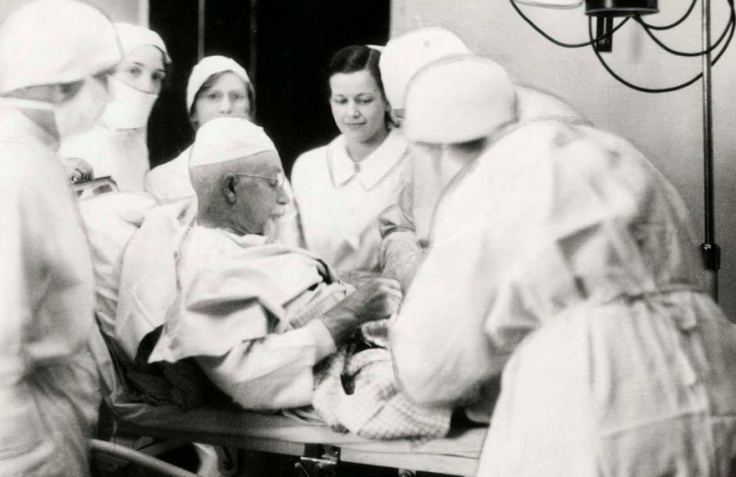Incredible Self-Surgeries In History: Do-It-Yourself Procedures Include Appendectomy, Amputation

If you want something done right, do it yourself.
Over the years, few medical procedures have garnered as much public attention as self-surgeries – procedures performed on one’s own body. Although it may sound crazy, several incidents have been recorded over the centuries, with physicians operating on their own appendices, hernias, and limbs.
Leonid Ivanovich Rogozov and Evan O'Neill Kane are arguably the most famous self-surgeons in recent history. Their stories are adapted from the many case studies their work has inspired.
Leonid Ivanovich Roganov

Although Russians are known for their stoic composure, Leningrad physician Leonid Ivanovich Rogozov outdid the bulk of his countrymen when he extracted his own appendix. Rogozov, a promising surgeon and academic, had agreed to accompany a polar expedition tasked with the construction of Novolazarevskaya – a new Antarctica base. The 27-year-old served as the team’s doctor, meteorologist and occasional driver.
Shortly after the project was finished, things took a dark turn.
“It seems that I have appendicitis. I am keeping quiet about it, even smiling. Why frighten my friends? Who could be of help? A polar explorer’s only encounter with medicine is likely to have been in a dentist’s chair,” Rogozov wrote in his diary.
If left untreated, appendicitis induces lethal sepsis. Unfortunately, the nearest hospital was thousands of miles away. Roganov saw no other option but to remove it himself.
After the team helped him with preparations, Rogozov laid on the table, positioned himself in a supine position, and made the first incision.
“Rogozov first infiltrated the layers of abdominal wall with 20 ml of 0.5% procaine, using several injections. After 15 minutes he made a 10-12 cm incision,” Neil Bermel writes in the case study. “The visibility in the depth of the wound was not ideal; sometimes he had to raise his head to obtain a better view or to use the mirror, but for the most part he worked by feel.”
The incredible procedure was over in one hour and 45 minutes. Rogozov removed the infected appendix, carefully applied antibiotics, and closed the wound. Two weeks later, he resumed his duties at the base.
Evan O’Neill Kane

Evan O’Neill Kane, chief surgeon of the Kane Summit Hospital, is noted for several self-surgeries. Having carried out over 4,000 medical procedures, he wanted to experience his craft from the patient’s perspective. Throughout his many years of practice, Kane extracted his appendix, operated on an inguinal hernia, and amputated one of his fingers.
“Sitting on the operating table propped up by pillows and with a nurse holding his head forward that he might see, he calmly cut into his abdomen, carefully dissecting the tissues and closing the blood vessels as he worked his way in,” Rennie D. Chalmers wrote in a case study devoted to Kane’s auto-appendectomy. “He told the Times reporter that he did this self-surgery to demonstrate the safety both of local anesthesia for a ‘major operation’ and of appendectomy.”
The remarkable procedure was witnessed by his brother, Dr. Tom L. Kane, who helped him close the wound. Although he was 70 years old at the time, Kane reportedly smiled throughout the entire procedure.
Sources: Rennie D. Chalmers. Do It Yourself Section. The Kane Surgery. JAMA. 1987 Feb 13;257(6):825-6.
Neil Bermel. Auto-appendectomy in the Antarctic: case report.BMJ 2009; 339 doi: http://dx.doi.org/10.1136/bmj.b496



























